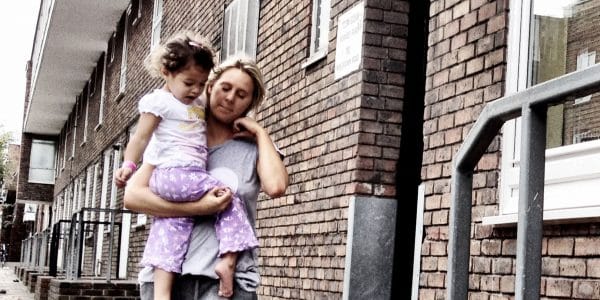
11/06/20
3 min read
The COVID-19 crisis has brought existing inequalities to the fore. It also risks exacerbating them. How we respond to it will determine whether the recovery is an inclusive one or ends up entrenching and widening social divisions. These are the main conclusions of a new report from the IFS Deaton Review of Inequalities, funded by the Nuffield Foundation.
Among the risks are:
- A widening in wage and employment inequalities. In the short run, it is overwhelmingly low earners who are in shut-down sectors, being furloughed and at risk of unemployment. In the longer run, more reliance on technology and working from home could favour the more highly educated at the expense of others.
- A widening in health inequalities. In the short run, the crisis appears to have widened even further the gap in death rates between better-off and less-affluent neighbourhoods, as well as between some ethnic minorities and the white majority. We know that periods of unemployment, most likely to affect the low-skilled, can have major detrimental long-term effects on health.
- A widening in ethnic inequalities. Some minority ethnic groups, and especially those of Pakistani or Bangladeshi origin, are much more likely than others to work in shut-down sectors. Black groups are disproportionately represented in key worker occupations and have been contracting COVID-19 at far higher rates than the white majority.
- A widening in generational inequalities. Those leaving school or university this year will enter the toughest labour market in more than a generation. Workers under 25 are twice as likely as those over 25 to work in a locked-down sector. After a tough decade, this could knock the younger generation back once more.
- A widening in gender inequalities. The additional childcare and housework as people stay at home and schools and nurseries closed has fallen far more on mothers than fathers. There must be a risk that this disproportionately inhibits work and career progression for mothers, when progress in closing the gender wage gap had already stalled.
- A widening in educational inequalities. Private schools are almost twice as likely to be providing online teaching as the state schools attended by children from the fifth most deprived families. Within the state sector, 55% of families from the most affluent backgrounds (top fifth) report schools providing online classes, compared with 40% among the least affluent. Better-off pupils also have better home facilities and are much more likely to have private tutoring. This could put back years of slow progress on social mobility.
The longer-term consequences are not all inevitable though. Some trends may turn out to be positive:
- An increase in remote working, and in the productivity of remote working, could be especially helpful for mothers’ careers. It may also allow more high-paid and high-productivity jobs to be located away from London.
- The increase in time that fathers are spending with their children during the crisis – even though less than mothers – might accelerate changes in gender norms.
- Attitudes may change – to the welfare system, to key workers, to inequalities between ethnic groups – in ways which make inclusive economic and social policies easier to sell and deliver.
Avoiding the worst outcomes, and having a chance at the best, will require effective policy. For example:
- Effective routes through further and vocational education will be more important than ever.
- Government will need to ensure that small firms that have a viable future survive the crisis, to avoid concentration of market power.
- Effective welfare to work and training, which equip those who become unemployed with genuinely valuable skills, will be vital.
- Children, especially poorer children, who are missing out on school will need additional teaching post crisis.
Robert Joyce, Deputy Director at IFS and an author of the report, said:
“The crisis has laid bare existing inequalities and risks exacerbating them, but some of its legacies might also provide opportunities. Government will need to be on the front foot in laying the groundwork for a strong and inclusive recovery even while still dealing with the immediate crisis. If, for example, we can limit now the severity of career disruption, the widening of health and educational inequalities, or the extent to which small firms that had a productive future are squeezed out by larger established competitors, policy’s job in years to come will be much less difficult than if it is trying to limit or undo the damage.”
Mark Franks, Director of Welfare at the Nuffield Foundation, said:
“This report provides further evidence that people are not affected equally by the COVID-19 pandemic – either in terms of the immediate risk to health or the negative social and economic consequences. In particular, some minority ethnic groups, people in certain key worker occupations, and those in low-income jobs – groups that often overlap – are at much greater risk. It is essential that the immediate policy response takes steps to address these inequalities, but we also need to understand and mitigate the underlying systemic and institutional factors that underpin them.”





















































